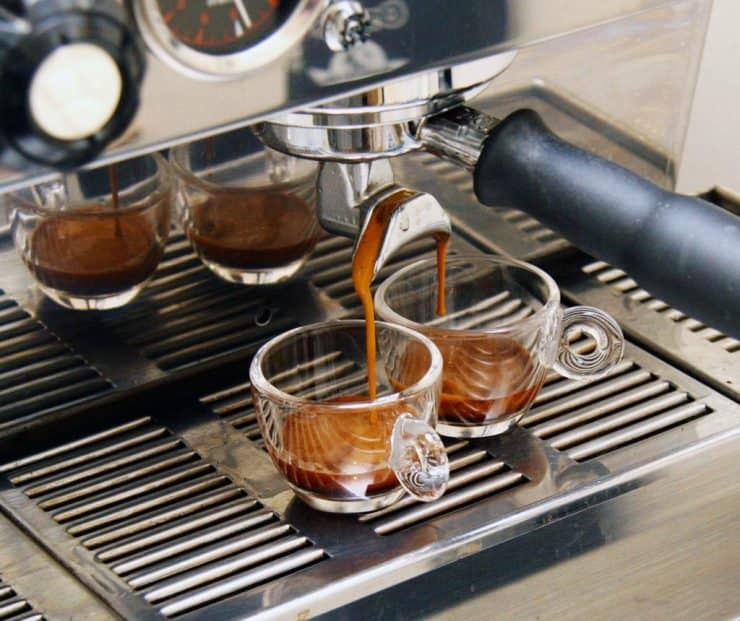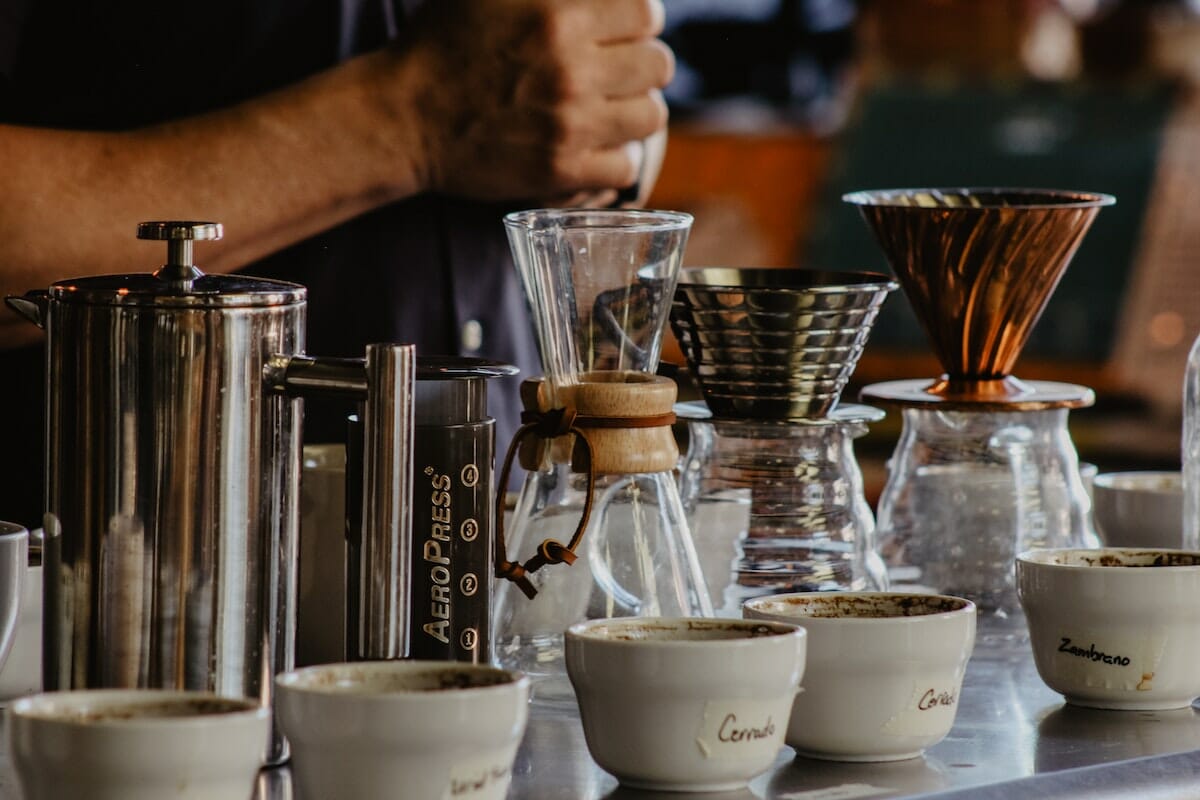The Ultimate Contrast of Popular Coffee Brewing Methods for Home Baristas
The Ultimate Contrast of Popular Coffee Brewing Methods for Home Baristas
Blog Article
The Science Behind Coffee Brewing: How Temperature and Time Affect Your Drink
Comprehending the science behind coffee brewing discloses that temperature and time are not simple variables yet critical aspects that determine the beverage's flavor account and overall quality. As we check out the nuances of these aspects, the inquiry develops: how can one successfully balance temperature level and time to achieve that excellent brew?
The Chemistry of Coffee Extraction
The chemistry of coffee removal delves right into the elaborate procedures that transform raw coffee beans right into the aromatic drink delighted in worldwide. This transformation mostly involves the solubility of numerous compounds existing in the beans, which are affected by aspects such as grind size, water high quality, and the brewing technique employed.
During the brewing process, warm water serves as a solvent, removing soluble substances, including high levels of caffeine, acids, lipids, and sugars, from the coffee grounds. Each substance adds to the taste profile, scent, and body of the last drink. Acids are responsible for zesty and bright notes, while oils contribute to a rich mouthfeel.
The extraction process is not uniform; different compounds liquify at various prices. The preliminary stages of brewing essence acids and sugars, causing a pleasant acidity, while prolonged extraction can bring about anger as a result of over-extraction of unfavorable compounds. Comprehending these chemical communications is critical for optimizing brewing techniques, as the balance between extraction time and water temperature level can substantially influence the general high quality of the coffee. Eventually, understanding the chemistry of coffee removal is vital to accomplishing a all-round and delicious cup.
Ideal Brewing Temperatures
Finding the best brewing temperature level is crucial for unlocking the complete potential of coffee flavors and fragrances - coffee brewing methods. Research study suggests that the optimum variety for brewing coffee lies in between 195 ° F to 205 ° F(90 ° C to 96 ° C) Within this range, the removal procedure efficiently dissolves the preferable soluble compounds in coffee beans, resulting in a savory and balanced cup
Developing at reduced temperature levels, such as below 195 ° F(90 ° C ), might result in under-extraction, generating an acidic and weak mixture with soft tastes. Conversely, developing at temperatures surpassing 205 ° F(96 ° C) can lead to over-extraction, creating a bitter and rough preference as a result of the excessive dissolution of unwanted substances, such as tannins.
Furthermore, the excellent developing temperature can differ relying on the coffee bean kind and roast level. For example, lighter roasts often take advantage of a little greater temperatures to improve their complicated taste accounts, while darker roasts might be much better suited to reduced temperature levels to reduce bitterness.
Inevitably, maintaining accuracy in developing temperature levels is crucial for attaining an unified balance of flavors, guaranteeing that every cup of coffee delivers a satisfying sensory experience.
Effect of Developing Time
Brewing time plays a critical role in determining the flavor profile and general quality of coffee. Shorter developing times can result in under-extraction, leading to a sour or weak taste, as not adequate soluble substances are dissolved.
Optimum developing time varies depending on the approach used and the work size of the coffee. A French press usually requires regarding 4 minutes, while coffee removal is typically completed within 25 to 30 secs. It is vital to adjust brewing time in combination with other variables, such as water temperature and coffee-to-water ratio, to attain the preferred taste profile.
Comprehending the effect of brewing time allows coffee fanatics to refine their developing methods, eventually enhancing the sensory experience of their mug (coffee brewing methods). With mindful interest to this variable, one can unlock the complete capacity of the coffee, disclosing its unique attributes and subtleties
Developing Techniques and Their Results

For circumstances, methods like French press and cold mixture enable a much longer steeping time, resulting in a fuller body and durable flavor because of enhanced extraction of oils and soluble solids. On the other hand, coffee brewing makes use of high stress and a much shorter removal time, creating a concentrated shot that stresses extreme tastes and an abundant crema.
Pour-over techniques, such as Chemex or V60, offer an even more regulated removal process, allowing the brewer to manipulate flow price and water circulation, which can enhance brightness and clarity. At the same time, percolation techniques cycle water with the coffee grounds numerous times, leading to a stronger, frequently bitter taste.
Last but not least, using paper filters versus steel view filters can also influence the final preference; paper filters commonly generate a cleaner cup by capturing oils and great particles, while steel filters allow more oils to go through, contributing to a fuller mouthfeel - coffee brewing methods. Understanding these nuances can elevate the coffee experience dramatically
Tips for Improving Your Brew
A well-executed mixture can change even the most basic coffee right into a read the article remarkable experience. To accomplish this, attention to information is vital. Start with top quality, freshly roasted beans, as their taste profile reduces in time. Grind the beans prior to brewing to take full advantage of quality, making certain the grind dimension matches your brewing technique-- coarser for French press and finer for espresso.
Water quality plays an important duty; use filteringed system water devoid of contaminations. The perfect brewing temperature level ranges between 195 ° F and 205 ° F(90 ° C to 96 ° C ) As well warm can scorch the coffee, while as well trendy might under-extract flavors.
Timing is just as vital. For immersion approaches, soaking for three to 5 mins is optimum, whereas drip methods usually take about 5 mins. Experiment with brew times to find your recommended strength.

Final Thought
In summary, the complex relationship in between temperature level and time is critical in the coffee brewing procedure. Comprehending these clinical principles empowers individuals to fine-tune their developing methods, inevitably leading to a more delightful and balanced coffee experience.
Understanding the scientific research behind coffee developing exposes that temperature and time are not simple variables yet essential components that dictate the drink's flavor account and overall top quality. Comprehending these chemical interactions is important for optimizing brewing strategies, as more information the balance in between extraction time and water temperature can dramatically influence the general top quality of the coffee.Brewing time plays a crucial role in identifying the taste account and general top quality of coffee. By focusing on these elements-- bean quality, grind dimension, water temperature level, steeping time, and ratio-- you can raise your coffee developing process, resulting in a consistently remarkable cup.
In summary, the complex relationship in between temperature level and time is paramount in the coffee brewing procedure.
Report this page